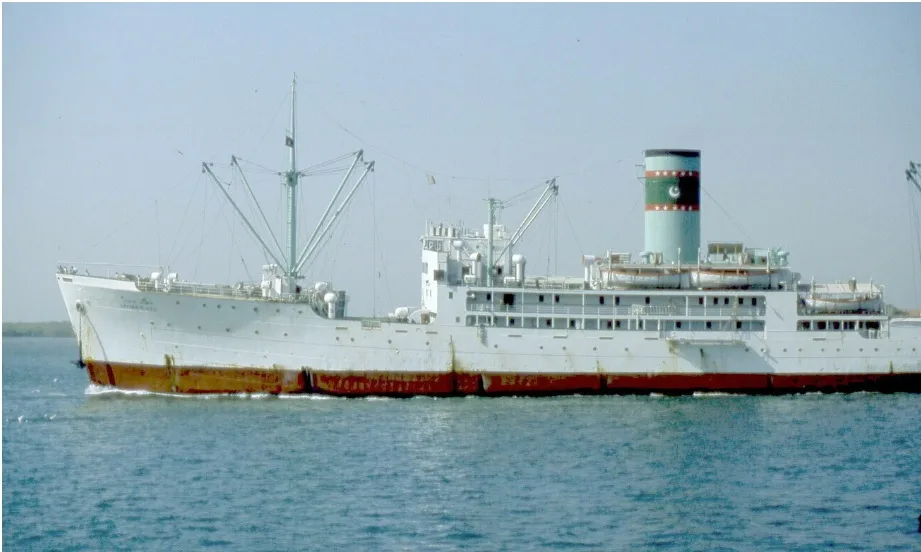
The sea has always connected cultures, facilitating journeys across vast distances. New travel possibilities now emerge for adventurers and pilgrims alike. A significant new ferry service is launching, set to connect Pakistan with various Gulf countries including UAE and Saudi Arabia. This initiative promises to transform regional travel, offering both convenience and a unique experience. It also strengthens cultural and economic ties between these vital regions. This development echoes a rich maritime past, highlighting Pakistan’s long history of sea voyages. The re-establishment of this service signifies a renewed strategic interest in maritime connectivity, effectively filling a gap that has existed for decades. This is not merely a new transport option; it represents a re-connection, fostering deeper bonds and wider opportunities.
Connecting Shores: Details of the New Ferry Service
The new ferry service connects Pakistan to Gulf countries, marking a significant development. This initiative primarily aims to facilitate travel for pilgrims. It also supports trade and tourism between these regions. Passengers will experience convenience and cost-effectiveness, offering a compelling alternative to air travel. This provides a unique journey across the Arabian Sea. This service could significantly boost tourism, stimulating new forms of travel, such as group tours or even vehicle transport. It will also foster greater cultural exchange, allowing more people to experience the diverse traditions of both Pakistan and the Gulf. This strategic move diversifies transport options, potentially making regional travel more accessible to a wider demographic.
A Legacy of Voyages: Pakistan’s Maritime History
Pakistan boasts a long, storied maritime history. Its coastal regions have always served as vital trade routes. Sea travel historically connected the subcontinent to the Middle East and beyond, facilitating cultural exchange and commerce. The return of passenger ferry services builds upon this rich heritage, reviving a traditional mode of regional travel. The establishment of companies like Muhammadi Steamship, founded in 1947, immediately post-independence, underscores that maritime shipping was a foundational aspect of Pakistan’s early economic and connectivity strategy. This deep history provides a strong cultural and practical foundation for the new service. Muhammadi Steamship’s nationalization in 1974, leading to its merger into the Pakistan National Shipping Corporation (PNSC), reveals a historical pattern of significant government involvement in national shipping lines. This precedent suggests that government support could be crucial for the long-term viability of such a large-scale maritime project.
The Pan Islamic Connection: Journeys of Faith and Passage
The Pan Islamic Steam Ship Company Ltd. played a crucial role in facilitating passenger services from Pakistan. M. A. Razak & Co. Ltd., a key shipping agency, represented Pan Islamic from 1953 onwards. Pan Islamic was also a publicly listed company, trading on the Pakistan Stock Exchange. This underscored its national importance. Pan Islamic notably chartered vessels to carry Muslim pilgrims. The vessel TS Pretoria, for instance, transported thousands, refitted to carry 2,000 pilgrim class passengers. This highlights that pilgrim travel was a core driver for historical passenger ferry services. Pan Islamic operated these services for a significant period, with its involvement with TS Pretoria spanning from 1962 to 1979.
This operational period reveals a nearly 40-year gap in direct, regular passenger ferry services between Pakistan and the Gulf. This gap represents a “lost” era of maritime connectivity. The new service is thus a restoration of a previously vital link. The historical precedent of Pan Islamic demonstrates a long-standing demand and viability for such maritime routes. The new service revives this vital connection, with the past scale of operations providing a benchmark for potential future traveler volumes.
Beyond Borders: Unlocking Opportunities for Tourism and Trade
The new ferry service extends beyond simple transport. It promises to unlock significant opportunities for both tourism and trade. Travelers can explore new destinations, including the vibrant cultures of the Gulf. Pakistan’s diverse landscapes also await visitors. The service provides an efficient route for goods, strengthening economic ties between regions. It supports small and medium enterprises, creating an economic multiplier effect. Increased trade means more business opportunities, job creation, and economic growth in port cities and beyond.
Direct maritime links enhance diplomatic relations, fostering greater understanding and cooperation. Travel, especially by sea, offers a unique opportunity for cultural immersion. Passengers from diverse backgrounds interact during the journey, building cultural bridges. This appeals to various segments, including pilgrims, adventure tourists, and business travelers, all of whom will benefit from this enhanced connectivity.
Planning Your Maritime Adventure: What to Expect
Modern ferries typically offer comfort and amenities. These may include comfortable seating, diverse dining options, and sleeping facilities for longer journeys. The journey duration will vary by route, depending on the specific Gulf country destination. Travelers should research booking procedures, checking schedules and fares well in advance. This offers a unique travel experience, differing significantly from air travel. Passengers can enjoy expansive sea views and a sense of relaxation, transforming the trip from mere logistics into a memorable adventure.
Conclusion: Sailing Towards a Connected Future
The new ferry service marks a significant milestone. It re-establishes a vital maritime link between Pakistan and the Gulf countries. This initiative promises a future of enhanced connectivity, fostering stronger regional ties. The revival of this service, after a long hiatus, symbolizes a renewed ambition for Pakistan to strengthen its regional integration through maritime routes. The historical success and scale of past pilgrim services indicate a proven, consistent demand for maritime travel on this route. This historical precedent provides a strong foundation for the long-term sustainability of the new service. Travelers are encouraged to explore this exciting new option and embrace the adventure of sea travel.
